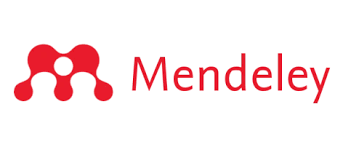Operator Performance Analysis Using Overall Labor Effectiveness Method with Root Cause Analysis Approach
DOI:
https://doi.org/10.59888/ajosh.v1i11.106Keywords:
Operator Performance Production, Overall Labor Effectiveness (OLE), Root Cause Analysis (RCA), House Of Quality (HOQ)Abstract
The growth of the manufacturing sector in Indonesia has slowed down due to the increase in COVID-19 cases, which has led to a decrease in the production volume of companies. This impact needs to be reassessed by each company, and one way to address it is by continuously improving company productivity. PT X is one of the companies in the manufacturing sector that has a program to continuously enhance its productivity, with its production result being pianos. This study focuses on the performance of operators in a specific production area that has consistently not met the company's productivity target over a period. The objective is to determine the effectiveness of the operators in that area using the Overall Labor Effectiveness (OLE) method. Subsequently, the obtained OLE results will be analyzed using the Root Cause Analysis (RCA) method, and improvement proposals will be provided, supported by the House of Quality (HOQ) method and previous literature. The research results indicate issues in one of the OLE variables, namely the performance ratio. Root cause analysis was conducted to identify the underlying issues, assisted by brainstorming tools, the 5-why method, and a fishbone diagram. This analysis revealed three main problems. Furthermore, two design proposals were formulated using the HOQ framework, and an additional proposal was based on previous research findings.
References
Agustina, F., & Riana, N. A. (2011). Analisis Produktivitas Dengan Metode Objective Matrix (Omax) Di Pt. X. Teknik Dan Manajemen Industri, 6(2), 150–158.
Ainanur, A., & Tirtayasa, S. (2018). Pengaruh Budaya Organisasi, Kompetensi Dan Motivasi Terhadap Kinerja Karyawan. Maneggio: Jurnal Ilmiah Magister Manajemen, 1(1), 1–14.
Andriani, D. P., Choiri, M., & Desrianto, F. X. B. (2018). Redesain Produk Berfokus Pada Customer Requirements Dengan Integrasi Axiomatic Design Dan House Of Quality. Jurnal Ilmiah Teknik Industri, 17(1), 71–82.
Anjani, R., & Pratiwi, I. (2021). Analisis Efektivitas Tenaga Kerja Di Masa New Normal Pada Departemen Finishing Menggunakan Overall Labor Effectiveness (Ole)(Pt Iskandar Indah Printing Textile, Surakarta). Seminar Nasional Teknik Dan Manajemen Industri, 1(1), 232–239.
Devani, V., & Syafruddin, S. (2018). Usulan Peningkatan Efektivitas Tenaga Kerja Dengan Menggunakan Metode Overall Labor Effectiveness. Jurnal Ilmiah Rekayasa Dan Manajemen Sistem Informasi, 4(2), 150–155.
Dewi, L., Komari, A., & Lutfianto, S. (2021). Usulan Kinerja Green Logistic Dengan Pendekatan Root Cause Analysis Guna Meningkatkan Re-Order Point Yang Efektif. Prosiding Seminar Nasional Teknik Industri, 1, 44–58.
Haq, I. S., & Purba, M. A. (2020). Kajian Penyebab Kerusakan Door Packing Pada Tabung Sterilizer Menggunakan Metode Root Cause Analysis (Rca) Di Sungai Kupang Mill. Jurnal Vokasi Teknologi Industri (Jvti), 2(2).
Irawati, H., Kusnandar, F., & Kusumaningrum, H. D. (2019). Analisis Penyebab Penolakan Produk Perikanan Indonesia Oleh Uni Eropa Periode 2007–2017 Dengan Pendekatan Root Cause Analysis. Jurnal Standardisasi, 21(2), 149–160.
Kurniawan, B. (2017). Teori Kendala Sebagai Alat Pengukuran Kinerja. Jurnal Akuntansi Bisnis, 9(2).
Kuswardana, A., Mayangsari, N. E., & Amrullah, H. N. (2017). Analisis Penyebab Kecelakaan Kerja Menggunakan Metode Rca (Fishbone Diagram Method And 5 €“Why Analysis) Di Pt. Pal Indonesia. Conference On Safety Engineering And Its Application, 1(1), 141–146.
Lestari, D. V., Kamal, D. M., & Saputra, Y. M. D. E. (2021). Root Cause Analyisis Kerusakan Cylinder Liner Pada Block Silinder Mesin Generator Set 18 Kva Dengan Metode Diagram Fishbone Di Divisi Sumber Daya Air Pt. Barata Indonesia (Persero). Seminar Nasional Teknik Mesin, 11(1), 1195–1205.
Nu’man, A. H., & Ria, A. (2023). Root Cause Analysis And Strategies To Improve Outpatient Pharmacy Services. International Journal Of Engineering Business And Social Science, 1(05), 353–362.
Rizki, M., & Saputra, A. (2022). Analisa Risiko Supply Chain Management Dengan Metode Grey Failure Mode And Effect Analysis Dan Root Cause Analysis Di Pt Pertamina Fuel Terminal Meulaboh. Jurnal Serambi Engineering, 7(1).
Rosmaini, R., & Tanjung, H. (2019). Pengaruh Kompetensi, Motivasi Dan Kepuasan Kerja Terhadap Kinerja Pegawai. Maneggio: Jurnal Ilmiah Magister Manajemen, 2(1), 1–15.
Sari, E. K., Mustakim, M., Annisa, R., & Utami, N. (2020). Scoring Kinerja Operator Pengolahan Crude Palm Oil Menggunakan Metode Analytic Hierarchy Process. Seminar Nasional Teknologi Informasi Komunikasi Dan Industri, 187.
Susendi, N., Suparman, A., & Sopyan, I. (2021). Kajian Metode Root Cause Analysis Yang Digunakan Dalam Manajemen Risiko Di Industri Farmasi. Majalah Farmasetika, 6(4), 310–321.
Wibowo, M. K. (2016). Edisi Ke 3, Jakarta: Pt. Raja Grafindo.
Wirawan, E. (2021). Penerapan Metode Pdca Dan 5 Why Analysis Pada Wtp Section Di Pt Kebun Tebu Mas. Jurnal Penelitian Bidang Inovasi & Pengelolaan Industri, 1(01), 1–10.
Yani, N. S. N. F., & Lina, R. R. (2015). Usulan Perbaikan Efektivitas Kinerja Pekerja Di Departemen Veneer Dengan Menggunakan Overall Labor Effectiveness (Ole) Dan Root Cause Analysis:(Studi Kasus: Pt. Asia Forestama Raya). Majapahit Techno: Jurnal Ilmiah Dan Teknologi, 5(2), 7–14.
Downloads
Published
Issue
Section
License
Copyright (c) 2023 Pratiwi Rahmadiani, Elisa Kusrini

This work is licensed under a Creative Commons Attribution-ShareAlike 4.0 International License.
Authors who publish with this journal agree to the following terms:
- Authors retain copyright and grant the journal right of first publication with the work simultaneously licensed under a Creative Commons Attribution-ShareAlike 4.0 International. that allows others to share the work with an acknowledgement of the work's authorship and initial publication in this journal.
- Authors are able to enter into separate, additional contractual arrangements for the non-exclusive distribution of the journal's published version of the work (e.g., post it to an institutional repository or publish it in a book), with an acknowledgement of its initial publication in this journal.
- Authors are permitted and encouraged to post their work online (e.g., in institutional repositories or on their website) prior to and during the submission process, as it can lead to productive exchanges, as well as earlier and greater citation of published work.










